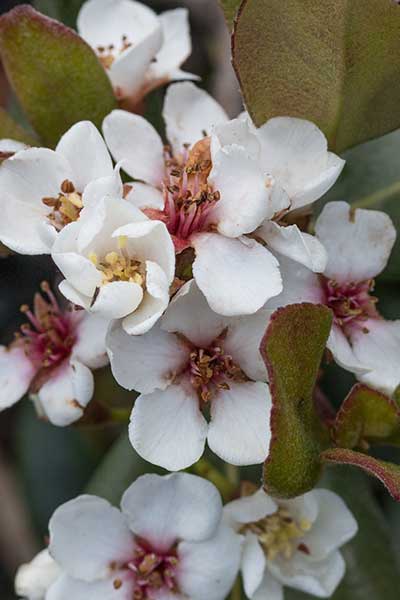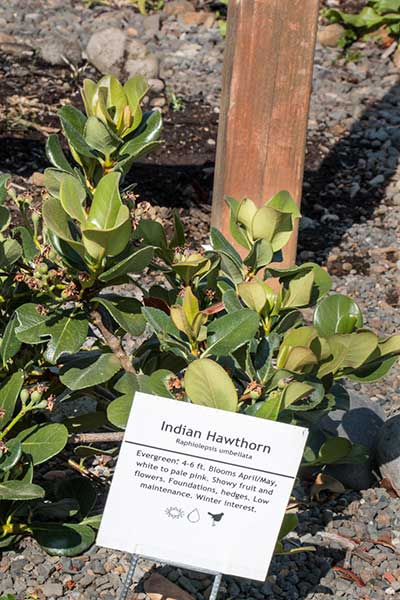Indian Hawthorn
- Scientific Name: Raphiolepis umbellata
- Garden: Xeriscaping Garden
- Plant Type: Shrub
- Evergreen/Deciduous: Evergreen
- Sun/Shade Exposure: Full Sun or Part Shade
- Moisture Requirements: Moist, Well-Drained
Plant Information
Indian hawthorns (Rhaphiolepis species and hybrids) are mostly low-growing, evergreen, flowering shrubs. With a dense mounding growth habit, they are ideal low-maintenance plants for use in small gardens and foundation plantings. Mature Height/Spread Most cultivars grow between 3 and 6 feet tall and about the same in width. A few are large shrubs that can be trained to a small tree form. Ornamental Features Indian hawthorns are grown for their attractively neat, mounded form and clusters of flowers. The fragrant, pink or white crabapple-like flowers open in clusters above the foliage in mid-April to May. Bluish-black berries appear in late summer and persist through the winter. The leathery, dark evergreen leaves are rounded, about 2 to 3 inches long, turning purplish in winter. Landscape Use Plants prefer sun, although they will grow in partial shade. Indian hawthorn prefers moist, well-drained soil, but established shrubs will tolerate drought. It is tolerant of salt spray and sandy soils and is a good choice for coastal areas. Pruning is rarely necessary. If pruning is needed it should be done just after bloom. Problems Entomosporium leaf spot, caused by the fungus Entomosporium mespili, is the most common disease of Indian hawthorn. It is most damaging following periods of frequent rainfall in the spring and fall.
Data Source
https://hgic.clemson.edu/factsheet/indian-hawthorn/Plant Photos







